Butyric Acid – FCC Grade
$11.00 – $69.99
Chemical Information
- Chemical Name: Butyric Acid
- CAS Number: 107-92-6
- Molecular Formula: C₄H₈O₂
- Molecular Weight: 88.11 g/mol
- Appearance: Colorless to pale yellow liquid
- Odor: Strong, sour, buttery odor
- Purity: ≥ 99%
Physical & Chemical Properties
- Density: 0.961 g/cm³
- Boiling Point: 163.5°C (326.3°F)
- Melting Point: -7.9°C (17.7°F)
- Solubility: Miscible with water, ethanol, and ether
- Refractive Index: 1.412
- Flash Point: 69°C (156°F)
Mechanical & Stability Properties
- Thermal Stability: Stable under normal storage conditions
- Oxidation Resistance: Moderate resistance to oxidation
- Volatility: Moderate evaporation rate
- Compatibility: Compatible with oils, fats, and other flavoring compounds
Description
Our Butyric Acid is a colorless to pale yellow liquid with a strong, distinctive odor. Known for its versatility, it is commonly used in flavor and fragrance formulations, chemical synthesis, and industrial applications. Butyric acid’s natural occurrence in dairy products makes it useful in the food industry, while its reactivity with alcohols and other compounds makes it valuable in manufacturing esters and other chemical intermediates.
Applications of Butyric Acid:
1. Food & Beverage Industry
- Flavoring Agent: Butyric Acid is used to create a buttery flavor profile in products like margarine, butter substitutes, and cheese.
- Cheese Production: Used in cheese ripening and to enhance the flavor and aroma of aged cheeses.
- Beverages: Found in certain beverages to provide a unique taste and as a preservative.
- Confectionery & Snacks: Adds a buttery flavor to candy and snack foods.
2. Pharmaceuticals & Dietary Supplements
- Supplement Ingredient: Incorporated into some dietary supplements for its digestive health benefits.
- Gastrointestinal Health: Used in some gut-health products due to its role in gut flora balance.
3. Cosmetics & Personal Care
- Fragrance Component: Adds a buttery, creamy note to fragrance formulations.
- Skin Care: Used in emollients and skin soothing formulations.
- Hair Care: Incorporated in some shampoos, conditioners, and hair treatments.
4. Animal Feed
- Feed Additive: Enhances palatability in livestock feed and pet food.
- Nutritional Supplements: Used in animal health products for its digestive benefits.
5. Industrial Applications
- Plasticizers: Used in the production of plastics and synthetic polymers.
- Solvent in Chemical Manufacturing: Employed as a solvent in certain chemical processes.
Storage
- Store in a cool, dry, and well-ventilated area away from direct sunlight and heat sources.
- Keep containers tightly sealed to preserve freshness and prevent evaporation.
- Use food-grade containers made of glass or high-quality plastics.
Handling
- Use protective gloves, safety goggles, and appropriate clothing when handling in bulk.
- Avoid direct skin contact and inhalation of vapors.
- Ensure good ventilation to minimize inhalation exposure.
Safety
- GRAS: Generally Recognized As Safe when used as a food ingredient in regulated amounts.
- GHS Classification: Mild irritant, but safe for food use in regulated quantities.
- Environmental Impact: Biodegradable and environmentally friendly when disposed of properly.
- Regulatory Compliance: Meets REACH, GHS, and FDA regulations for food-grade use.
Additional information
| Size | 30mL (1 Fl Oz), 100mL (3.3 Fl Oz), 500mL (16 Fl Oz), 1000mL (32 Fl Oz) |
|---|
Be the first to review “Butyric Acid – FCC Grade” Cancel reply
Related products
-
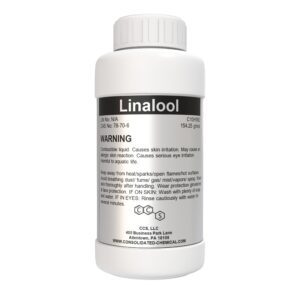
Linalool – High-Purity Natural Aroma Compound
$12.99 – $159.99 Select options This product has multiple variants. The options may be chosen on the product page -

Para Cresyl Methyl Ether – High-Purity Aroma Chemical
$12.00 – $39.99 Select options This product has multiple variants. The options may be chosen on the product page -
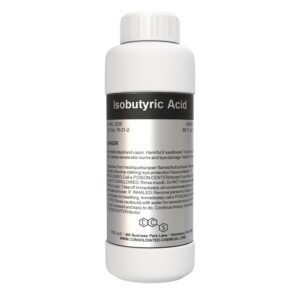
Isobutyric Acid | Food & Fragrance Grade
$12.00 – $18.00 Select options This product has multiple variants. The options may be chosen on the product page -
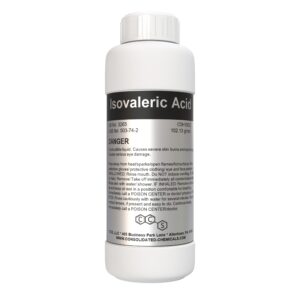
Isovaleric Acid | Premium Fragrance\Aroma Compound
Read more
SKU: N/A
Categories: Essential Oils, Flavoring Agent, Food Additive, Fragrance Chemical, Fragrances & Aromas (15), Herbicide, Pesticide, Solvents (3)
Tags: Animal Feed Additive, Biochemical Research, Butanoic acid, Butyric Acid, butyric acid anti-inflammatory, butyric acid antimicrobial, butyric acid antioxidant, butyric acid biodegradable, butyric acid bulk, butyric acid CAS 107-92-6, butyric acid chemical, butyric acid distributor, butyric acid eco-friendly, butyric acid emulsifier, butyric acid FCC grade, butyric acid flavoring, butyric acid food grade, butyric acid for digestion, butyric acid for flavor enhancement, butyric acid for food preservation, butyric acid for food safety, butyric acid for gut flora, butyric acid for gut health, butyric acid for immune support, butyric acid for industrial applications, butyric acid for joint health, butyric acid for pain relief, butyric acid for probiotics, butyric acid for relaxation, butyric acid for stress relief, butyric acid for wellness products, butyric acid global market, butyric acid GRAS, butyric acid gut health, butyric acid health benefits, butyric acid high-performance, butyric acid high-purity, butyric acid in animal feed, butyric acid in beverages, butyric acid in body care products, butyric acid in butter substitutes, butyric acid in cheese, butyric acid in confectionery, butyric acid in cosmetic formulations, butyric acid in cosmetics, butyric acid in dairy products, butyric acid in deodorants, butyric acid in dietary supplements, butyric acid in essential oils, butyric acid in feed additive, butyric acid in flavoring, butyric acid in food, butyric acid in food additives, butyric acid in food processing, butyric acid in food products, butyric acid in fragrances, butyric acid in functional foods, butyric acid in gut health supplements, butyric acid in hair care, butyric acid in herbal products, butyric acid in holistic health, butyric acid in livestock health, butyric acid in margarine, butyric acid in natural flavoring, butyric acid in natural health products, butyric acid in natural remedies, butyric acid in organic products, butyric acid in personal care, butyric acid in pet food, butyric acid in pharmaceutical-grade products, butyric acid in pharmaceuticals, butyric acid in probiotics, butyric acid in skin care, butyric acid in snacks, butyric acid in toothpaste, butyric acid in veterinary medicine, butyric acid manufacturer, butyric acid natural flavor, butyric acid natural ingredient, butyric acid packaging, butyric acid preservative, butyric acid regulatory compliance, butyric acid safe for consumption, butyric acid shipping, butyric acid supplier, butyric acid sustainable sourcing, butyric acid wholesale, Carboxylic Acid, Chemical Intermediate, Dairy Flavor Additive, Ester Production, Ethylacetic acid, Fermentation Product, Flavoring Agent, Food Grade Butyric Acid, Fragrance Ingredient, High Purity Butyric Acid, Industrial Grade Butyric Acid, Laboratory Reagent, Odorant, Organic Acid, Pharmaceutical Ingredient, Propanecarboxylic acid, Propylformic acid, Rubber Manufacturing, Short-Chain Fatty Acid, Solvent, vomit


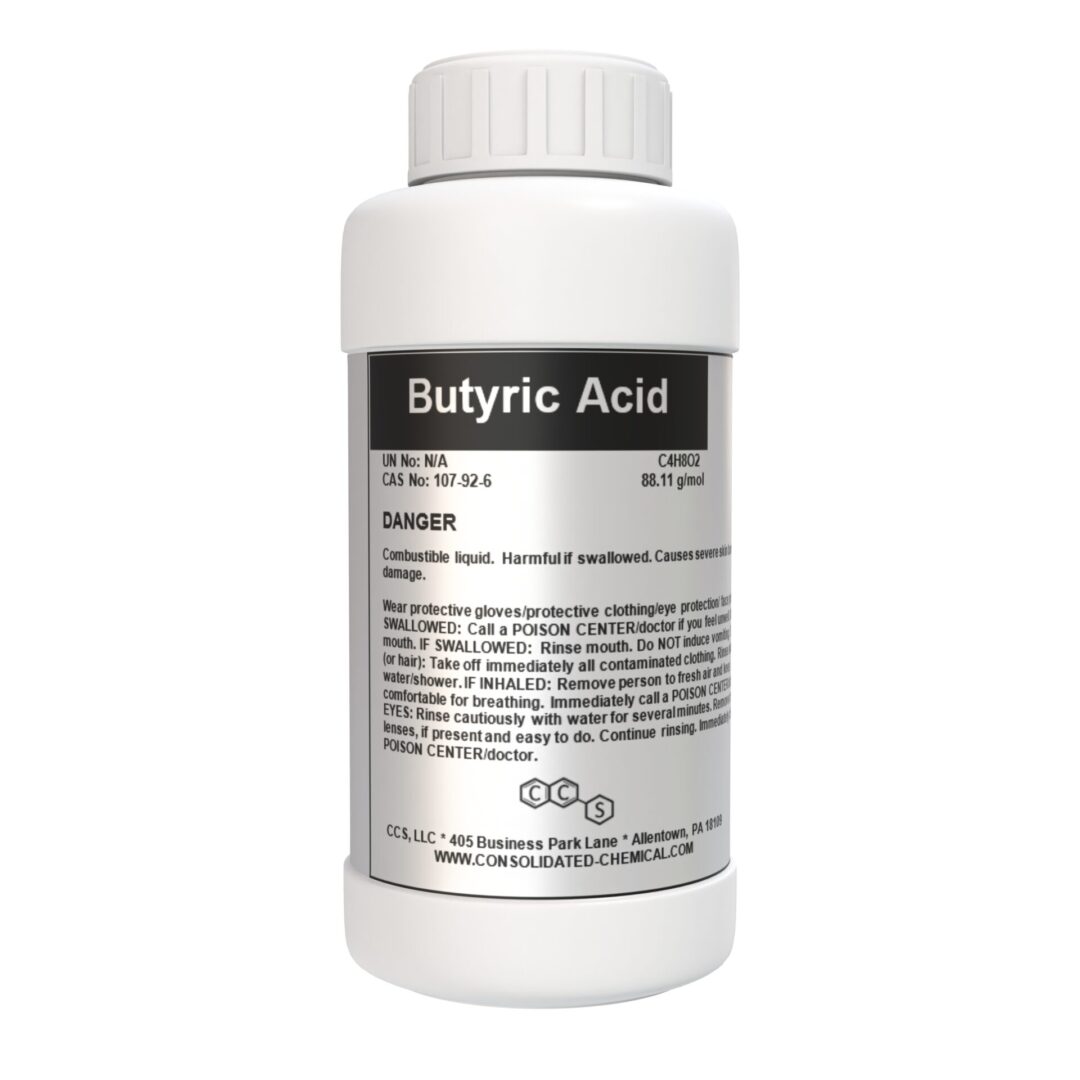
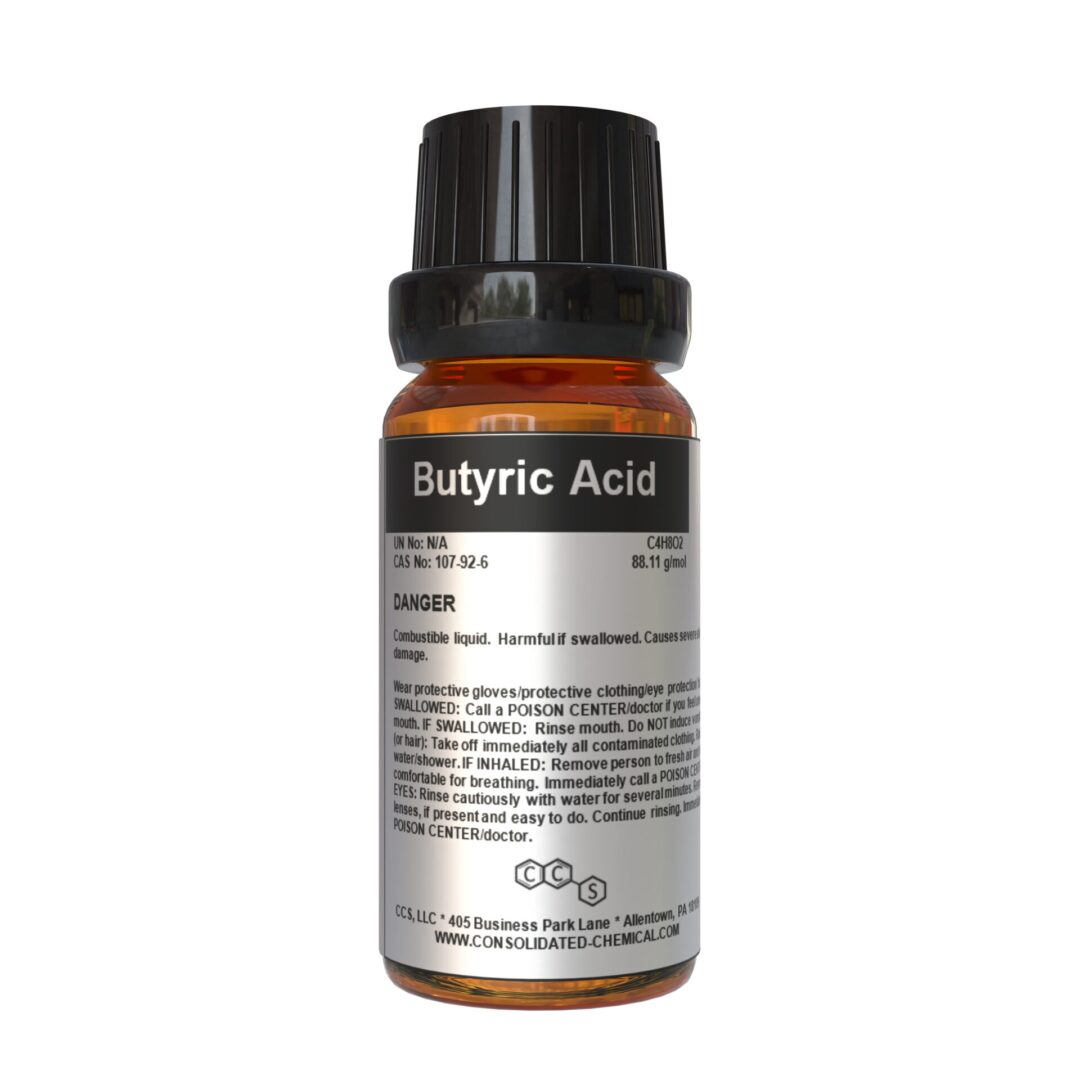
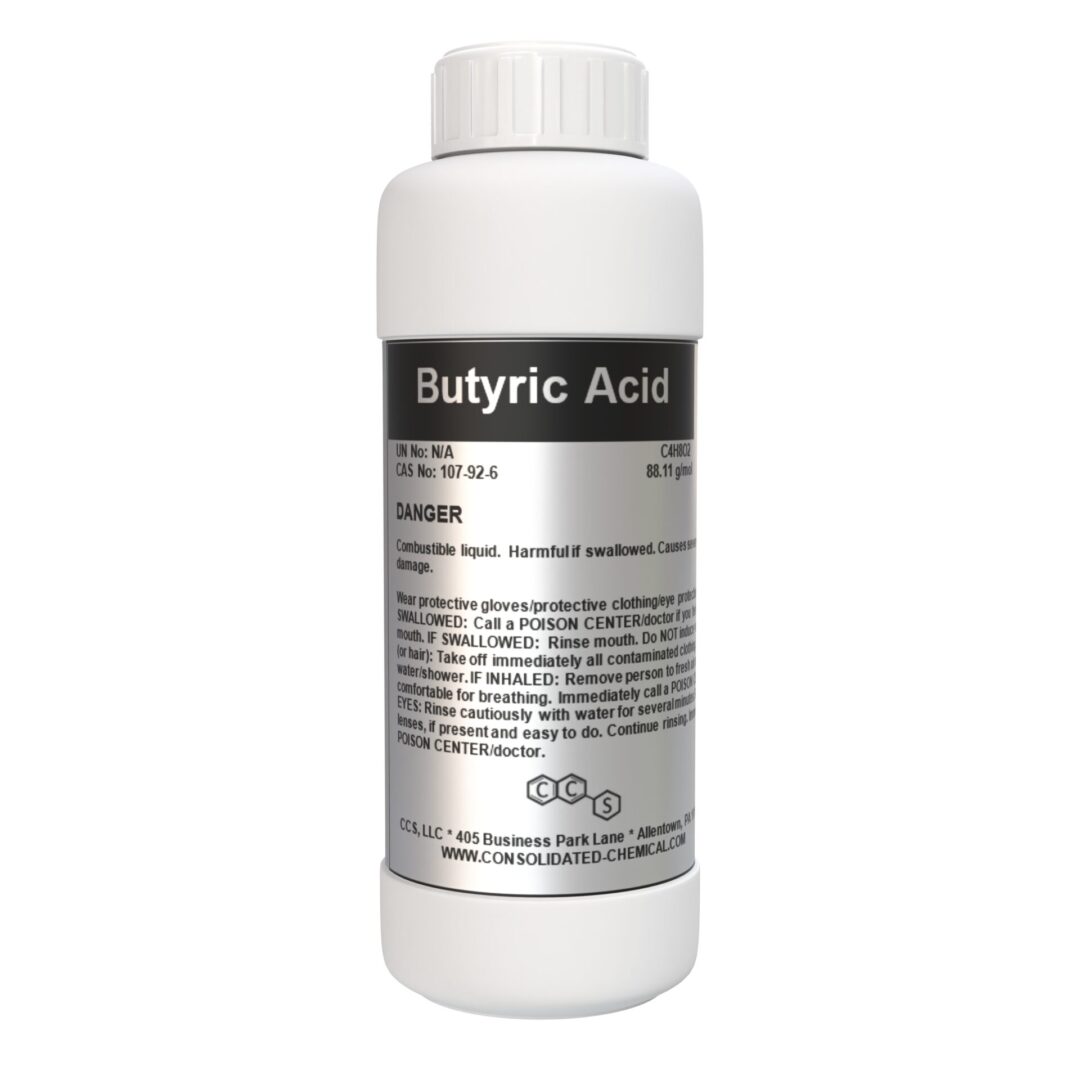

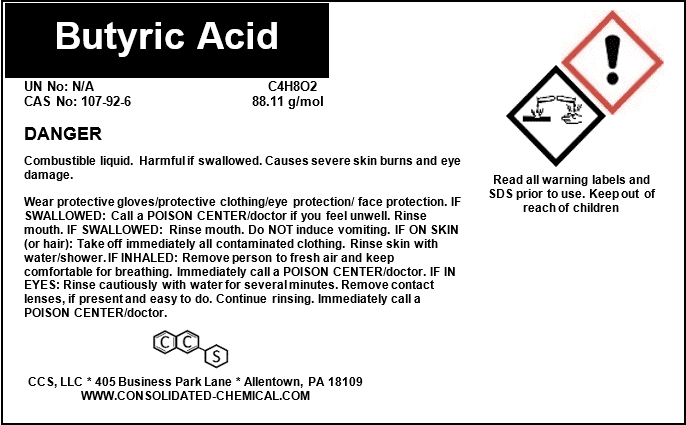
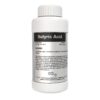
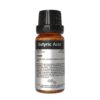
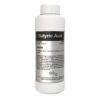
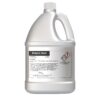
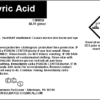
Reviews
There are no reviews yet.